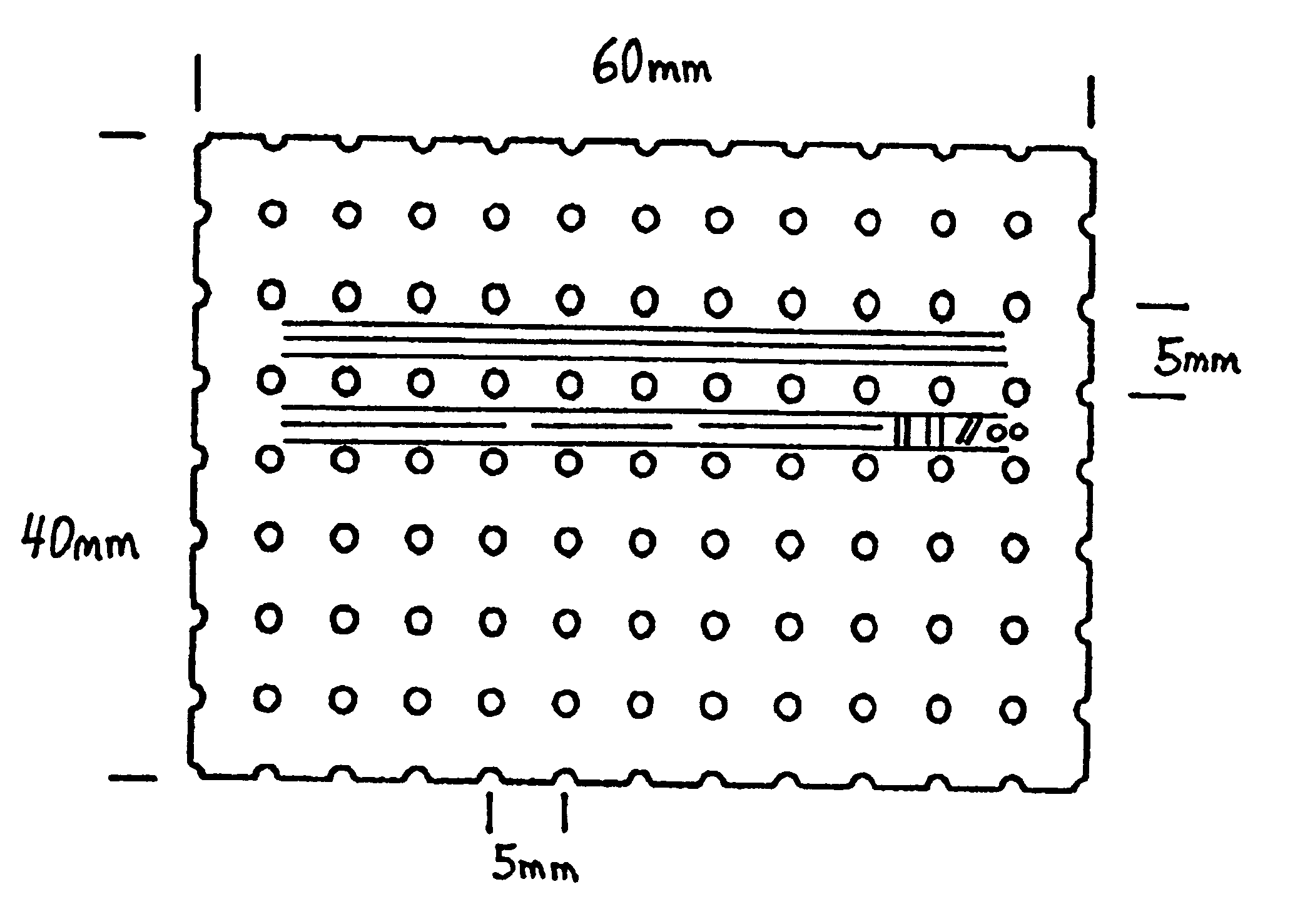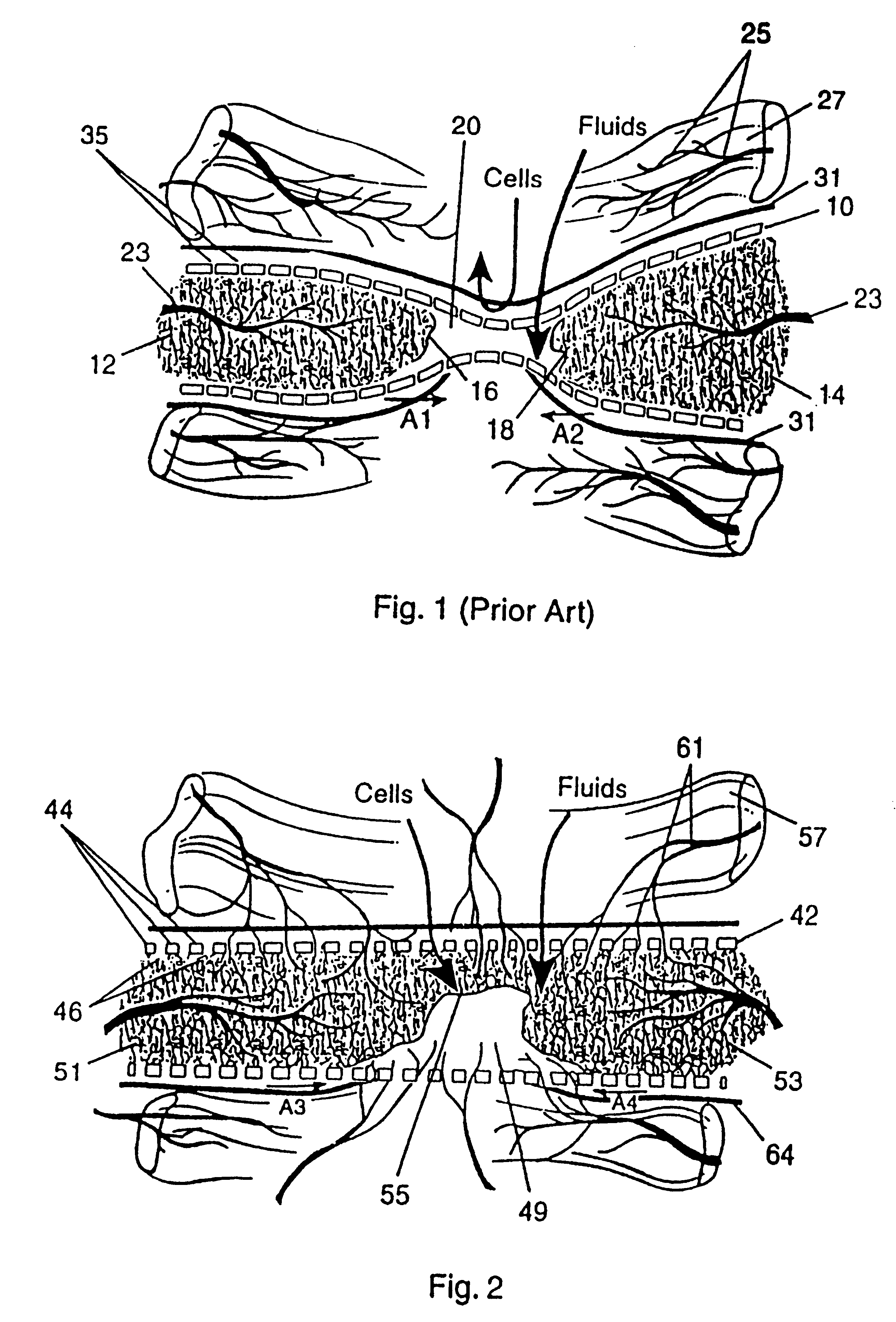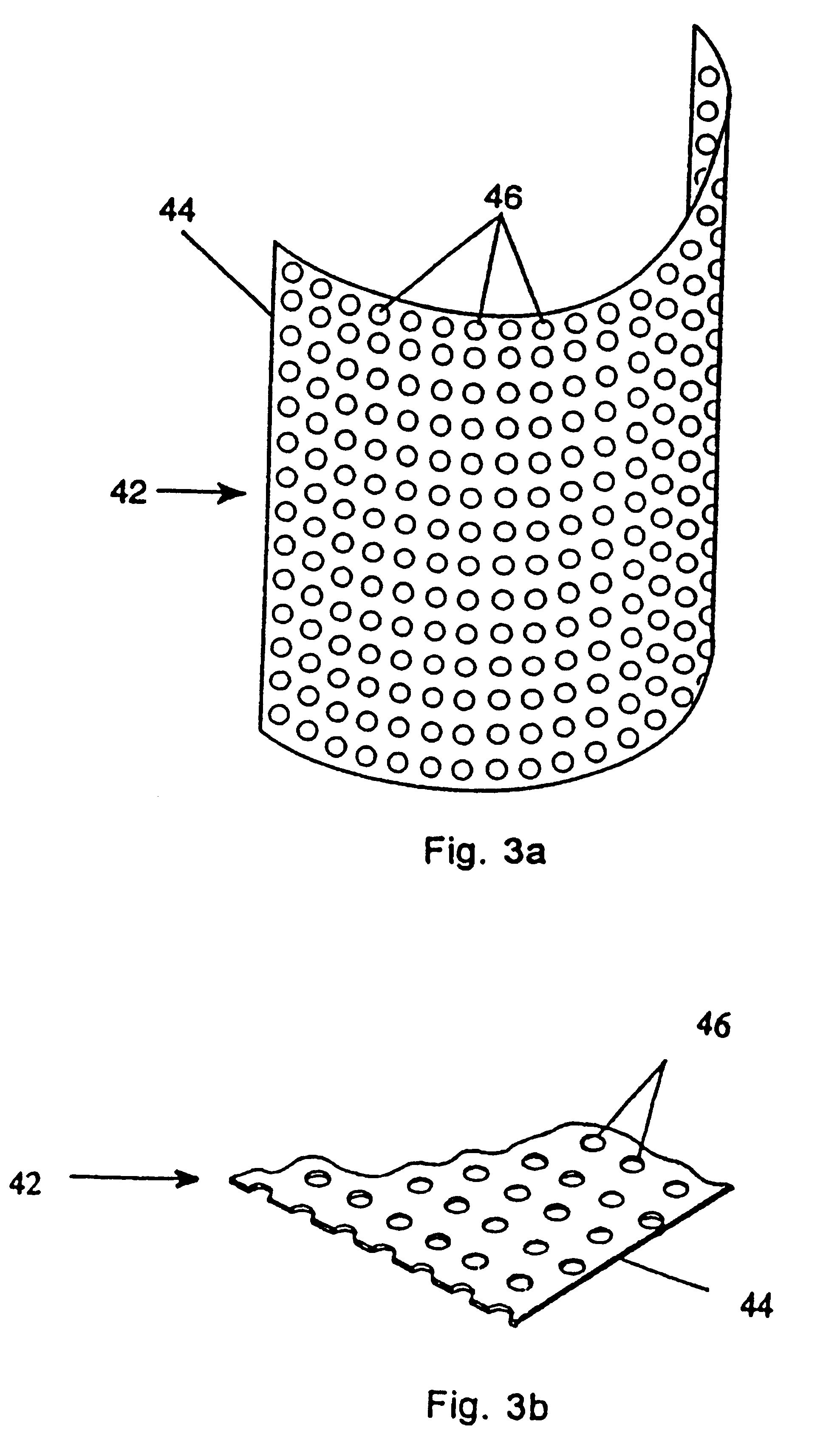Membrane with tissue-guiding surface corrugations
a membrane and surface corrugation technology, applied in the field of implants, can solve the problems of limited osteoinductive ability, limited donor site, bone quantity, donor site morbidity, etc., and achieve the effect of only having limited osteoinductive capabilities, limiting donor site, and limited bone allografting procedures
- Summary
- Abstract
- Description
- Claims
- Application Information
AI Technical Summary
Problems solved by technology
Method used
Image
Examples
Embodiment Construction
Turning to FIG. 2, a protective bone regeneration membrane 42 is illustrated, comprising a base material 44 and apertures 46. The protective bone regeneration membrane 42 is shown in FIG. 2 wrapped around a bone defect area 49. The bone, which is surrounded by the protective bone regeneration membrane 42, comprises a first section of long bone 51, a second section of long bone 53, and a partially healed intermediate section of long bone 55. The protective bone regeneration membrane 42 is rigid enough to prevent prolapse of the surrounding tissues 57 into the bone defect area 49. Additionally, the apertures 46 of the protective bone regeneration membrane 42 are large enough to allow for a proliferation of blood vessels 61 therethrough and into the first section of long bone 51, the second section of long bone 53, and the partially healed bone defect 49. Since the protective bone regeneration membrane 42 of the presently preferred embodiment is rigid enough to withstand prolapse of th...
PUM
| Property | Measurement | Unit |
|---|---|---|
| Time | aaaaa | aaaaa |
| Diameter | aaaaa | aaaaa |
| Diameter | aaaaa | aaaaa |
Abstract
Description
Claims
Application Information
 Login to View More
Login to View More - R&D
- Intellectual Property
- Life Sciences
- Materials
- Tech Scout
- Unparalleled Data Quality
- Higher Quality Content
- 60% Fewer Hallucinations
Browse by: Latest US Patents, China's latest patents, Technical Efficacy Thesaurus, Application Domain, Technology Topic, Popular Technical Reports.
© 2025 PatSnap. All rights reserved.Legal|Privacy policy|Modern Slavery Act Transparency Statement|Sitemap|About US| Contact US: help@patsnap.com



